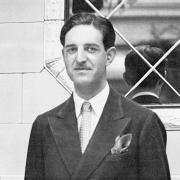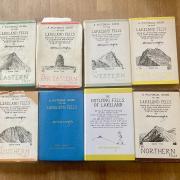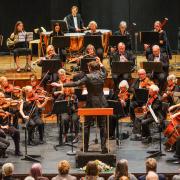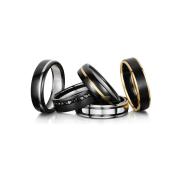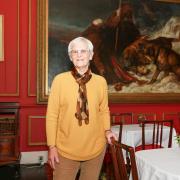It has been a long time coming but the county’s first ever Maundy Service was well worth the wait
It has taken 88 years for the Queen to visit Blackburn Cathedral and several centuries longer for Maundy money to wend its way to Lancashire.
But everyone agreed it was well worth the wait when Her Majesty and the Duke of Edinburgh arrived at one of Britain’s newest cathedrals for one of the nation’s oldest ceremonies.
It was particularly poignant for recipient Alec Stuttard, 74, from the Ewood area of Blackburn. When Alec was 13, he was selected to be a chorister representing Blackburn Cathedral at the coronation in 1953. Sadly, he never made it having been laid low with laryngitis.
His moment finally came as thousands gathered in the town centre, many having been there for several hours for a good vantage point, eager to see this colourful and historic occasion unfold.
The day was brightened considerably by the presence of the Queen’s ceremonial protectors, the Yeoman of the Guard, in their red and gold tunics. These contrasted with the Queen’s wool dress in cerise, grey and cream by royal designer Stewart Parvin. Over it, she wore a matching cashmere coat.
Inside the cathedral, the Queen, who holds the title Duke of Lancaster, presented coins to 88 men and 88 women – the figure reflecting Her Majesty’s age – as rewards for their service to the local community and the church.
One cathedral or abbey is selected each year for this distinction. Not only was this the first Maundy money service to be staged in Blackburn, it was the first time The Queen had crossed the cathedral’s threshold.
‘The Queen always enjoys the annual Maundy Service and I am certain she was doubly delighted at the fantastic welcome she received from Lancastrians who turned out in great numbers to greet her on the short journey from Blackburn Station to the Cathedral,’ said the Dean of Blackburn, The Very Rev Christopher Armstrong.
It was also a big day for Lancashire’s new Bishop, Rt Rev. Julian Henderson, who was appointed in October. ‘It was wonderful to welcome Her Majesty to the Cathedral in my first year in the Diocese,’ he said.
‘The occasion was an honour and privilege for Blackburn and for Lancashire. The Cathedral looked magnificent for the service and was a credit to the town and the county.’
The Royal party had arrived at Blackburn Railway Station at 10.45am and they were then driven slowly down Church Street to the Cathedral for the service. In keeping with the wishes of The Queen, it was business as usual with very little disruption in the town.
That didn’t stop thousands lining the street, with Blackburn decked with bunting and flags as many stallholders joined the other crowds to cheer the Royal visitor.
As the car drew up outside the Cathedral, the Royal Standard was raised on top of the spire for the first time ever and the Cathedral became the Chapel Royal for the day. Inside, an expectant crowd stood as a magnificent fanfare echoed around the building.
The combined Choirs of Blackburn Cathedral and the Chapel Royal then led the congregation in singing followed by several processions.
The last of these included The Children of the Royal Almonry, all drawn from Lancashire schools. The youngsters who took part are Scarlett Smith, 7, from St Mary’s RC Primary School, Langho; Kimbarly De Sousa, 10, from St Anne’s RC Primary, Blackburn; Jack Duerden, 6, from Feniscowles Junior School and Lucas Woodhouse, 8, from St Mary’s RC Primary, Osbaldeston.
The Almonry group also included those Yeoman, the oldest British military corps in existence. They took up positions all around the Cathedral, each holding a standard.
Prayers of thanksgiving were said after the distribution of the money was complete and there followed a stirring rendition of the National Anthem which, in keeping with tradition, had the second line ‘Long live our noble Duke’, to recognise the Queen’s status as The Duke of Lancaster.
In keeping with Royal Maundy tradition, The Queen and the Duke of Edinburgh then spent time with religious and civic dignitaries at a reception followed by a civic lunch at the ground of Blackburn Rovers.
Meanwhile, the recipients of Maundy money were the guests of honour at another civic event hosted by Blackburn with Darwen Council at nearby King George’s Hall.
Coins of note
This ancient ceremony can be traced back to the 4th century and has its origin in the commandment Christ gave after washing the feet of his disciples on the day before Good Friday.
Back in the 13th century members of the Royal Family handed out money and gifts and, to recall Christ’s simple act of humility, by washing the feet of the poor.
Henry IV began the practice of relating the number of recipients of gifts to the sovereign’s age and, in the 18th century the act of washing the feet of the poor was discontinued with coins replacing food and clothing in the 19th century.
Maundy money as we know it started in the reign of Charles II with an undated issue of hammered coins in 1662.
Today’s recipients of Royal Maundy, as many men and women over 70 as there are years in the sovereign’s age, are chosen because of the Christian service they have given to the Church and community.
At the ceremony, which takes place annually on Maundy Thursday, the sovereign hands to each recipient two small leather string purses. A red purse contains – in ordinary coinage – money in lieu of food and clothing; the other, a white purse, contains silver Maundy coins consisting of the same number of pence as the years of the sovereign’s age.
Maundy coins bear the same portrait of Her Majesty prepared by Mary Gillick for the first issued in the year of her coronation in 1953.














